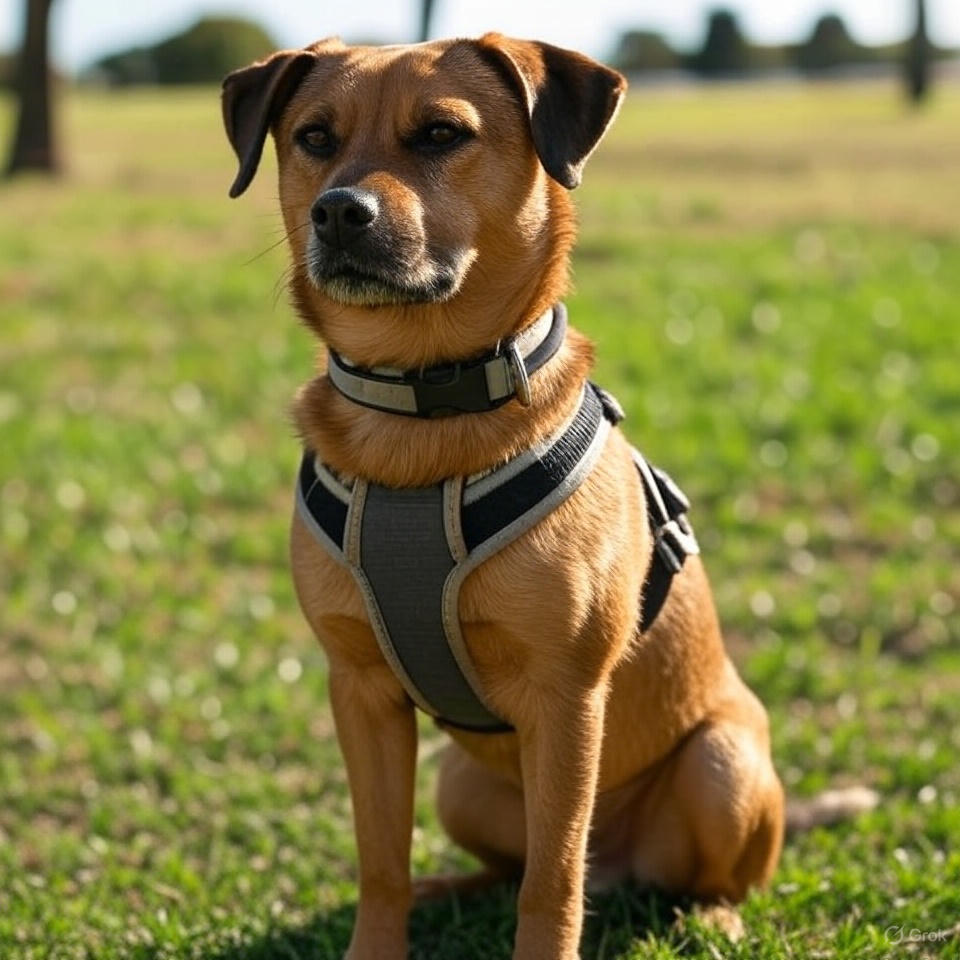Why Flat Collars Trump Harnesses for Effective Dog Training
Hey there, dog lovers! It’s Off Leash K9 Training in Georgia. With years of hands-on experience training pups of all breeds and temperaments, I’ve seen firsthand what works best for building a strong, obedient bond between dogs and their owners. Today, I want to dive into a hot topic in the dog world: flat collars versus harnesses. While harnesses have gained popularity in recent years—often marketed as the “safer” or “more humane” option—I’m here to explain why flat collars are superior for most training scenarios. Don’t get me wrong; harnesses have their place “a super small place”, but when it comes to teaching proper leash manners and off-leash reliability, flat collars win every time. Let’s break it down.
Better Control and Clear Communication During Training
One of the biggest advantages of a flat collar is the level of control it provides. A collar sits around your dog’s neck, allowing you to guide their head and body more effectively. This is crucial for training because dogs naturally follow where their head goes. With a flat collar, subtle corrections or redirects feel more direct, helping your dog understand commands like “heel” or “off” faster.
In contrast, harnesses distribute pressure across the chest or back, which can actually reduce your control—especially with larger or stronger dogs. You might end up using more physical strength just to keep them in line, which isn’t ideal for consistent training. Harnesses are great for activities like sledding where pulling is encouraged, but for everyday walks and obedience work? They often make it harder to communicate boundaries.
At Off Leash K9 Training, we focus on balanced methods that emphasize clear leadership. A flat collar supports this by enabling precise feedback without overwhelming force. It’s why we’ve helped countless Georgia dogs go from chaotic pullers to calm companions.
Harnesses Can Encourage Pulling and Lead to Other Issues—Flat Collars Discourage It
Here’s a truth bomb: many harnesses unintentionally promote pulling. Think about it—sled dogs wear harnesses because the design leverages their natural opposition reflex (that instinct to push against pressure). When a dog feels resistance on their chest, they often lean in harder, turning your walk into a tug-of-war. I’ve seen too many owners switch to harnesses thinking it’ll stop pulling, only to find their dog pulls even more because the tool reinforces the behavior.
But that’s not all—harnesses come with a slew of other negatives. For starters, they’re notorious for allowing dogs to escape. If the harness is even slightly too loose or not fitted perfectly, clever pups can back out and bolt, leading to dangerous situations. Flat collars, when properly adjusted, are much harder for dogs to slip out of.
Additionally, poorly designed or ill-fitting harnesses can cause physical harm. They might restrict shoulder movement, leading to gait issues, especially in growing puppies or dogs that pull. Straps rubbing against the skin can result in chafing, irritation, or even long-term muscle damage if the wrong type is used. Some harnesses put excessive pressure on the shoulders and hips, which can be uncomfortable or harmful over time. And let’s not forget, some dogs just plain hate wearing them, making walks a stressful ordeal for everyone involved.
Flat collars, on the other hand, apply pressure in a way that naturally discourages pulling when used correctly. If your dog lunges forward, the collar provides a gentle reminder around the neck, teaching them to stay by your side. Over time, this leads to loose-leash walking without the constant battle. Of course, safety is key. Myths about collars causing tracheal damage stem from improper use or poor fitting, but with proper training, flat collars have been safely used for centuries without issues.
Simplicity, Versatility, and Long-Term Benefits
Flat collars are straightforward: easy to put on, adjustable, and versatile for attaching ID tags or leashes. They’re perfect for well-trained dogs who walk politely and don’t require extra restraint. Plus, they’re less bulky, making them ideal for Georgia’s hot weather— no chafing or overheating like some harnesses cause.
Harnesses can be fiddly to fit properly, and a poor fit leads to escape artists or discomfort. They’re more complicated to put on, often requiring adjustments as your dog grows or changes weight, and can be harder to clean. In my experience, this added hassle just complicates training when simplicity is what gets results.
When Might a Harness Be Okay?
I’m not anti-harness entirely. If your dog has a medical condition, like tracheal collapse, a harness might be recommended by your vet to avoid neck pressure. Front-clip versions can help with mild pullers by redirecting them toward you, but this does not correct the issue. We also have a of clients that say they use harness because the dogs are choking themselves with at flat collar, this is just a training issue, trained dogs don’t pull! However, even then, we at Off Leash K9 prefer transitioning to collars as training progresses for ultimate freedom and control.
Final Thoughts: Choose Flat Collars for Real Results
In my experience running Off Leash K9 Training in Georgia, flat collars set dogs up for success by prioritizing control, discouraging bad habits, and simplifying the training process. Harnesses might seem trendy, but with risks like encouraging pulling, escape possibilities, physical strain, and fitting frustrations, they often complicate things and delay progress. If you’re struggling with leash pulling or want to level up your dog’s obedience, reach out to us—we offer customized programs that get results fast.
Ready to ditch the harness and embrace effective training? Contact Off Leash K9 Training Georgia today for a consultation. Your dog (and your arms) will thank you!
Stay pawsitive,
Off Leash K9 Training Georgia







